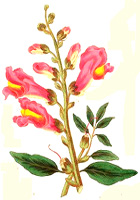 The tulip symbol that has been adopted both by the EPDA as it's logo, along with many Parkinson's disease organizations and groups around the world, is the Dr. James Parkinson Tulip.
The tulip symbol that has been adopted both by the EPDA as it's logo, along with many Parkinson's disease organizations and groups around the world, is the Dr. James Parkinson Tulip. The story of the Parkinson tulip began in 1980 in the Netherlands when J.W.S. Van der Wereld, a Dutch horticulturalist who had PD, gave the name "Dr. James Parkinson" to the red and white tulip he had developed.
In 1981 he registered his prize cultivar, the 'Dr James Parkinson' bulb. The name was chosen to honor Dr. James Parkinson, the English doctor who described the condition in his 1817 "Essay On The Shaking Palsy" and to honour the International Year of the Disabled.
The Tulipa 'Doctor James Parkinson' received the Award of Merit that same year from the Royal Horticultural Society in London England, and also received the Trial Garden Award from the Royal General Bulb Growers of Holland.
It is described as a flower: “exterior, glowing cardinal red, small feathered white edge, outer base whitish; inside, currant-red to turkey-red, broad feathered white edge, anthers pale yellow.”
On 11 April 2005, the Red Tulip was launched as the Worldwide Symbol of Parkinson's Disease at the 9th World PD Day Conference in Luxembourg.














No comments:
Post a Comment